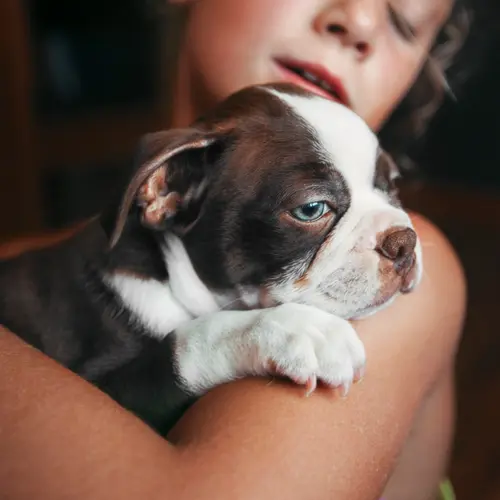The intervertebral disc is a fibrous tissue that provides a jelly-like cushion between the bones of the spine. These discs provide your dog's spine with the flexibility that helps them move, run, and jump easily.
Intervertebral disc disease in dogs refers to a ruptured, displaced, or herniated disc in their back. When intervertebral discs experience any extreme force or condition, it causes them to swell. This can lead to severe damage to the spinal cord.
Minor spinal cord damage can cause your dog to feel pain while walking and experience limited mobility. Severe damage to the spinal cord can lead to the permanent loss of the ability to walk.
Because of these extreme consequences, intervertebral disc disease (IVDD) requires immediate medical attention.
What Causes Intervertebral Disc Disease in Dogs?
Intervertebral disc disease is a gradual, degenerative condition, affecting your pet's spine over a period of time. The disease is most common in older dogs, but it can occur in younger dogs, too. This condition can affect any breed of dog, but some species have a higher risk than others, especially those that are chondrodystrophic. These include Dachshunds, French Bulldogs, Shih Tzus, Pekingese, Basset hounds, and Beagles.
The most common cause of IVDD is the hardening of the intervertebral discs to the point that they fail to cushion the vertebrae properly. The hardening could be caused by an extreme force from the outside, or can happen over time.
When these shock-absorbing discs stop working normally, it leads to abrasion or rupture of the spinal cord. These hardened discs also put pressure on the spinal cord. As a result, the dog's nerve impulses also get damaged, such as those related to bladder and bowel control.
In cases when your dog jumps or lands poorly on the ground, it can burst one or more discs. This can also compress the nerves of the dog's spinal cord, leading to severe pain, paralysis, or even nerve damage.
What Are the Symptoms of Intervertebral Disc Disease?
IVDD symptoms in dogs vary, but can include:
- Intense back or neck pain
- Imbalance or dragging of feet
- Complete loss of front or hind limb function
- Loss of the ability to urinate or empty the bladder
- Loss of pain perception, referring to severe spinal cord injury
If you observe any of these symptoms in your dog, you should see a vet right away.
How Is Intervertebral Disc Disease in Dogs Diagnosed?
The initial diagnosis of IVDD includes a health screening (A complete blood count,, a urinalysis, or serum chemistry), along with an imaging test suggested by your veterinarian, like:
- X-rays of the spinal cord
- Myelogram, an X-ray series to identify any compression in the spinal cord
- CT scan
- Magnetic resonance imaging (MRI)
- A lumbar puncture or spinal tap along with imaging
How Is Intervertebral Disc Disease Treated?
The most common treatment for mild IVDD is crate rest or confinement plus anti-inflammatory medications (steroid or nonsteroidal anti-inflammatory drugs). In this treatment, your dog is kept in a crate for a period recommended by your vet in order to prevent extraneous movement. Crate rest makes sure that your pet doesn't run, jump, or play roughly during the course of treatment. Other pain medications may be prescribed, and your vet may recommend a drug to keep your pet calm.
In severe cases, the vet may suggest other treatment options, including several surgical procedures. The most commonly recommended surgery is the decompression of the spine by removing the bone over the spinal canal.
The vet may discharge your pet three to seven days after surgery.
But, you will have to schedule various follow-up appointments, especially for the removal of any skin staples or sutures. The vet may also prescribe pain medications for your pet post-surgery. If left untreated, IVDD can lead to permanent loss of mobility in your pet. In addition, most dogs may also face urinary bladder issues and infections.
Take your pet to your veterinarian as soon as you observe any change in their usual walk.


